Buying Guide for the Best Lightweight Vacuums
Choosing the right lightweight vacuum can make your cleaning tasks much easier and more efficient. Lightweight vacuums are designed to be easy to maneuver, making them ideal for quick cleanups and for people who may have difficulty handling heavier models. When selecting a lightweight vacuum, it's important to consider several key specifications to ensure you get the best fit for your needs. Here are the key specs to look out for and how to navigate them.WeightWeight is a crucial factor in a lightweight vacuum because it directly affects how easy the vacuum is to carry and maneuver. Lightweight vacuums typically weigh between 5 to 10 pounds. If you need a vacuum for quick cleanups or have limited strength, aim for the lower end of this range. If you need a bit more power and can handle a bit more weight, you can go for models closer to 10 pounds.
Suction PowerSuction power determines how effectively the vacuum can pick up dirt and debris. This is usually measured in watts or air watts. Higher suction power means better cleaning performance, especially on carpets. For hard floors and light cleaning, lower suction power may suffice. If you have pets or thick carpets, look for higher suction power to ensure thorough cleaning.
Battery LifeBattery life is important for cordless lightweight vacuums. It indicates how long the vacuum can operate on a single charge. Battery life can range from 15 minutes to over an hour. If you have a small area to clean, shorter battery life may be sufficient. For larger areas or more intensive cleaning sessions, look for models with longer battery life or consider vacuums with replaceable batteries.
Dustbin CapacityDustbin capacity refers to how much dirt and debris the vacuum can hold before it needs to be emptied. Smaller capacities mean more frequent emptying, which can be inconvenient. Capacities typically range from 0.5 to 1 liter. If you have a larger home or pets, a larger dustbin capacity will be more convenient. For smaller spaces or quick cleanups, a smaller capacity may be adequate.
Filtration SystemThe filtration system is important for trapping dust and allergens, making it crucial for people with allergies or asthma. HEPA filters are the gold standard, capturing 99.97% of particles. If air quality is a concern, look for vacuums with HEPA filters. For general use, standard filters may be sufficient, but they won't capture as many fine particles.
Attachments and AccessoriesAttachments and accessories can enhance the versatility of your vacuum. Common attachments include crevice tools, dusting brushes, and pet hair tools. Consider what types of surfaces and areas you'll be cleaning. If you have pets, look for pet-specific attachments. For general cleaning, a basic set of attachments will usually suffice.
Noise LevelNoise level is measured in decibels (dB) and indicates how loud the vacuum is during operation. Quieter vacuums are generally more pleasant to use, especially in homes with children or pets. Noise levels typically range from 60 to 80 dB. If noise is a concern, look for models on the lower end of this range. For those who don't mind a bit of noise, this may be less of a priority.



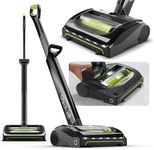
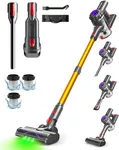

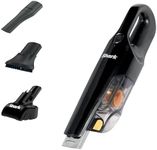
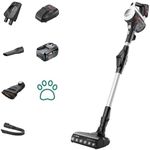



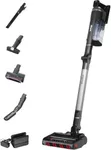
![Hoover HF6 Pet Cordless Stick Vacuum Cleaner with Pet Hair Tool, Floor Sensor, Dual Way Clean, Up to 100 Min Runtime,Anti Hair Wrap,Double Edge Cleaning, Versatile,QuickPark,Portable, 660w [HF610P]](https://images-proxy.bestreviews.guide/J6oqPn2yypa4ig3TqZDBm_MmJ-M=/0x150/https://m.media-amazon.com/images/I/41CAd8CA1CL._AC_CX679_.jpg)
![Hoover HF1 Plus Pet Flexi Cordless Stick Vacuum Cleaner with Flexi Tube, Pet Hair Tool, Turbo Suction Mode, Up to 45min Runtime, LED Lights, Multi-Floor Nozzle, Handheld Capability [HF1PZ10PX]](https://images-proxy.bestreviews.guide/iONRYWNxHq3VqJK3E8zknlBWfOM=/0x150/https://m.media-amazon.com/images/I/412krr3XRDL._AC_CX679_.jpg)


